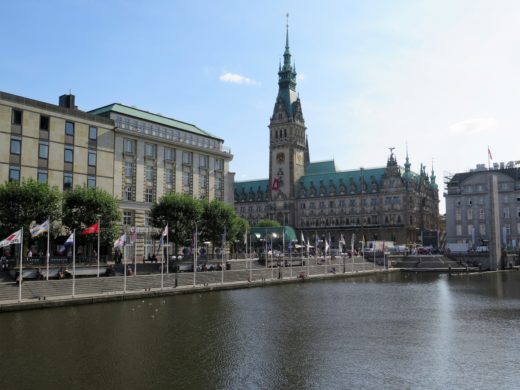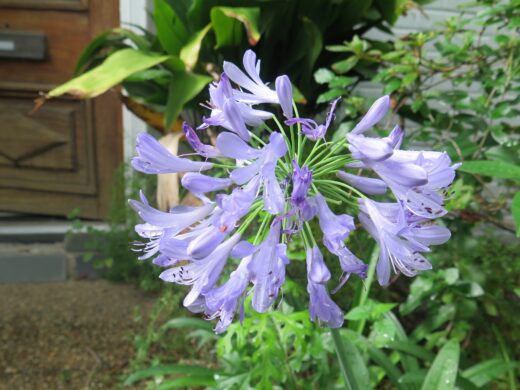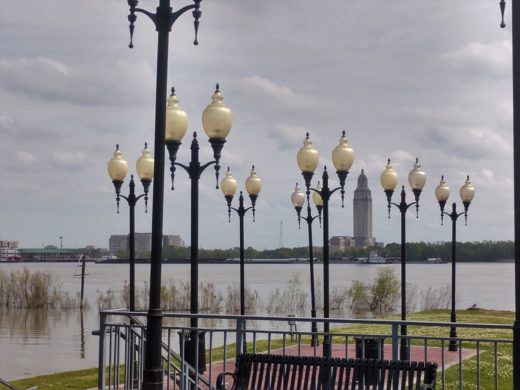Laura Creole Plantation in Louisiana

In Feburary, we took a sightseeing visit to Laura Creole Antebellum Plantation on the west bank of the Mississippi River about 30 miles northwest of New Orleans. This is one of the fascinating historical places in Louisiana which give a glimpse of pre-Civil War plantation life in Louisiana during the late 1700s and 1800s. At that time, these huge plantations grew crops of sugar cane, cotton and indigo. The owners often lived luxurious lifestyles. February was a crisp, sunny day and prefect for our outting. An organization which operates the plantation gave a educational tour of the people who built and lived in the plantation, as well as the slaves who lived there.
A number of these plantations, dating to the late 1700s and early 1800s, have been meticulously restored. The Laura Creole Plantation home and related buildings were “rescued” in 1993 by a preservationist, Norman Marmillion, who purchased the property. The property was owned by large chemical corporation and it was scheduled for demolition. Marmillion researched hundreds of pages of documents, restored the “big house” and developed an interesting narrative of the people who lived here prior to the Civil War. The home looked new to us; and we discovered that it endured a massive fire in 2004. Some of the original home remained while other parts were rebuilt and several wings were not rebuilt.
Although this “big house” lacks the massive columns which a person often associates with antebellum houses, it is typical of Creole homes build along the Mississippi River. It was built in 1804 – 1805 and features has a raised brick basement story and a briquette-entre-poteaux (brick between posts) upper floor. One of the characteristics of this style of home is that there are no hallways. All the rooms open to an outside porch.
The focus of the tour was of the people who lived in the home. For example, the plantation is one of the few Louisiana colonial properties prior to the Civil War which was owned and operated by women. It is named Laura (1861 – 1963) after one of these descendants who inherited and managed the property. Here are photos of the lady at various stages of her life.
The plantation home, or “big house”, was built in 1805 by Guillaume DuParc, a French naval officer who fought the British at Pensacola in the Revolutionary War. To secure his allegiance to the U.S., President Thomas Jefferson granted DuParc’s petition for land by giving him this track of land along the Mississippi River. The land hand recently been acquired from France as part of the Louisiana Purchase.
The home was built on elevated parcel of land which overlooked the Mississippi River. For at least a century, the land had been the site of a large village, called Tabiscanja, meaning “long river view” of Acolapissa Indians. In 1785, several families of Acadian refugees from Canada settled on the site until they sold the land to DuParc. The French settlers considered the Indians to be French and let them continue to live on the property!
The home and lands were eventually named for DuParc’s grandson’s daughter, Laura Locoul (1861-1963), who owned own the estate for many decades. Laura Locoul wrote and eventually published her personal journal, “Memories of the Old Plantation Home.” This was served as a valuable resource for Norman Marmillion in his research about the plantation. The memoir is a 900 page document of words, photographs and testimony by family members and servants such as Locoul’s mother’s petition (as a French citizen) for reimbursement for losses and damages inflicted on the plantation during Union occupation.
Twelve acres of grounds and additional buildings — including slave homes — have also been restored. (At its peak, the plantation included over 12,000 acres of land.) Here is one of the family gardens. We visited the plantation in February and there were so many fruit trees — oranges, grapefruit and lemon — just full of fruit waiting to be harvested.
A gift shop, with an extensive collection of Louisiana-related books — both historical and childrens — is at the entrance to the property. This includes the diary of Laura. Also for sale were food products, such as fig jam and hot sauce, and various liquors.
Tour began at the front of the house where a majestic live oak tree met us.
First, the tour began on the basement which is on the ground level.
Here are the three children of the original French owners — left is Louis Duparc, center is Flagy Duparc and right is Elizabeth Duparc. The first owner, Guillaume Benjamin Demézière Duparc, lived at the plantation for 4 years, dying in 1808, 3 years after the house was completed. On October 25, 1821, Elisabeth Duparc, a native of Point Coupee, Louisiana, and the daughter of the late Guillaume Benjamin Demézière Duparc and Anne Nanette Prudhomme, was married at the St. John the Baptist Catholic Church in Edgard to George Raymond Locoul, a native of Bordeaux, France. They became the owners of this property.
The plantation home was built by Senegal slaves from New Orleans — who were master craftsmen. Huge cypress longs were cut, hewed and numbered in a location which was off the grounds of the plantation.. Then they were moved to the construction site and re-assembled according to their numbering system. Here is one of the original logs which survived the fire.
In 2004, an electrical fire destroyed 80% of the home. The home had two additional wings which made U-shaped home. These additional wings were not rebuilt and are shown by the boarded up walls.
To seccure the weight of the building, brick pilings were built which extended six feet into the ground.
The living quarters of the family is located on second floor. The home had lavish furnishings of the period.
The plantation had several names over the years, and eventually was named after Laura. Here is the room where Laura was born.
Outside the home are beautiful gardens. The grounds were full of orange, lemon and grapefruit trees.
The kitchen was situated in a building away from the main house. This is the original kitchen.
One of the agricultural crops grown on the plantation was sugar cane. These large iron pots were used to boil down the cane to make sugar.
Many slaves lived on the plantation. Some original slave homes are still on the grounds. They were occupied by farm workers until the 1970’s. The preservionist did extensive research on the slaves who lived on the property including names and when they came to live on the plantation. Interestingly, the only direct descendants of the original owners are those from descended from slaves — which resulted from affair between a young slave girl and one of the grandsons or great-grandsons of the original French owner.
Two families lived in the home which was divided in half.
Also on the property was a mother-in-law home built for family member. Here it is in the prime
.
Over the years, the home has fallen in disrepair. An eerie relic of a time gone by.
I loved all the citrus trees which were full of ripe fruit.
At the end of the tour, we circled back to the front of the home and a look towards the levee.It was a wonderful, educational tour on a beautiful February day. I highly recommend a visit to Laura Creole Plantation.
Be sure to check out the Laura Creole Plantation gallery for this post as the galleries typically contain pictures not in the post.



